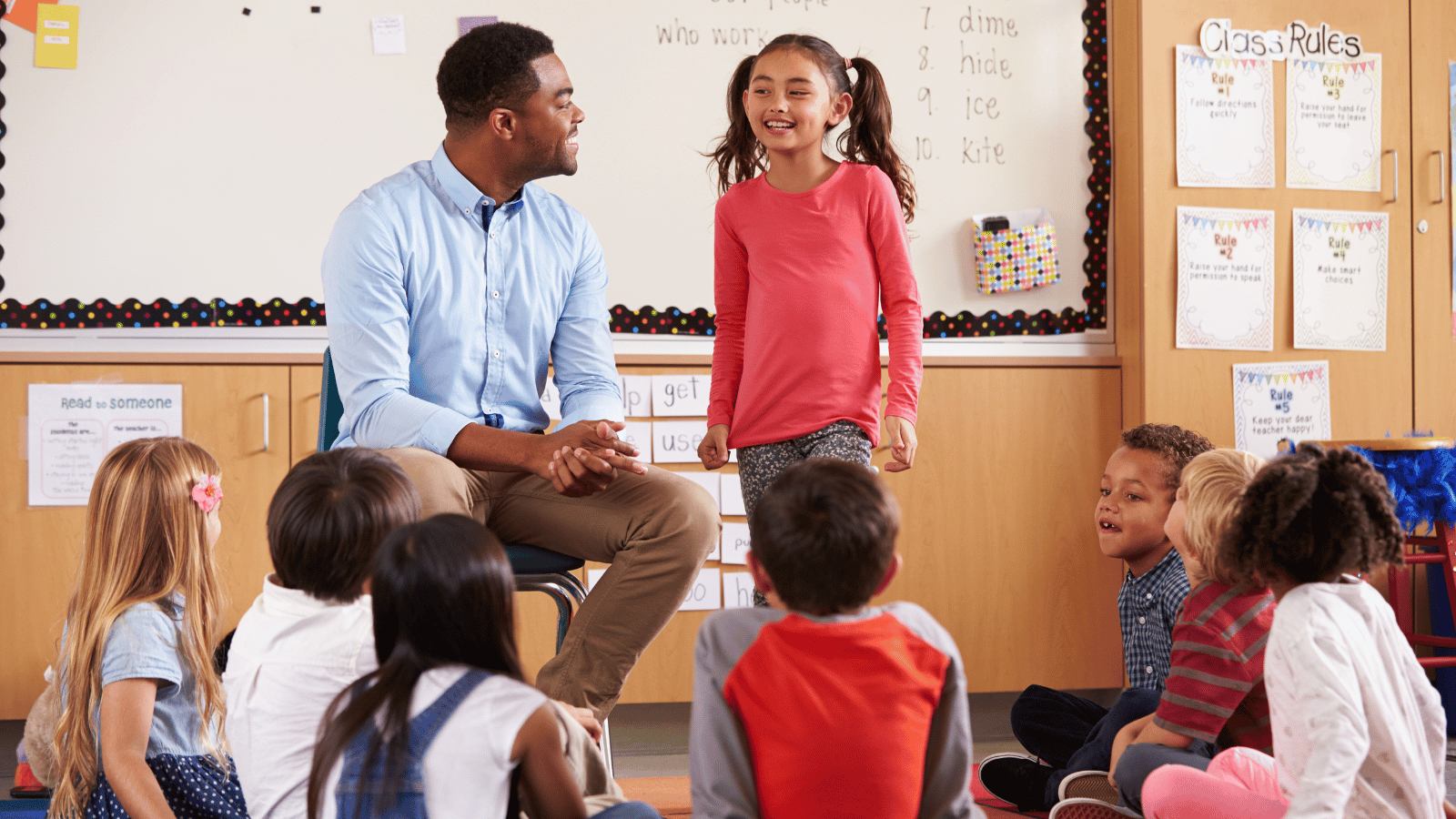
Creating a safe learning environment is a top priority for early childhood educators. This goes beyond physical safety—it encompasses a space where children feel seen, heard, and valued, laying the groundwork for deep, meaningful learning.
In this article, we'll explore actionable strategies teachers can use to craft nurturing and safe spaces.
What is a safe classroom environment?
A safe classroom environment aims to make children feel protected and valued. It promotes trust between children and educators, allows children to ask questions and take risks, supports children's safety and learning, and celebrates children's self-expression, diversity, and achievements.
A safe learning environment should be inclusive to all of your children, and it should promote every child's social-emotional development and support children who have experienced trauma.
With brightwheel's preschool classroom management feature, you can enhance child development and keep your classroom organized. The software makes it easy to assign staff and children to specific rooms, manage your ratios, and track attendance and progress. This supports a safe learning environment as your classrooms will always be staffed properly to ensure safety.
Why is it important to create a safe learning environment?
Creating a learning environment that prioritizes your children's safety without restricting their learning opportunities is crucial to helping them reach their social and emotional developmental milestones. A safe, inclusive classroom allows children to explore and learn without risks to their health, safety, or well-being. Children who don’t feel safe or valued are less likely to participate in classroom activities.
How to create a safe classroom environment
Follow these tips to help your children feel safe in your classroom.
Supervise your children
Pay close attention to your children and implement active supervision strategies to prevent accidents and injuries. Place your educators around your classroom so they have a clear view of all your children. Your educators can use their knowledge of each child's abilities and tendencies to anticipate their actions and redirect them when necessary. Actively supervising your children helps your staff be proactive so you can keep a careful eye on them as they learn and explore.
Maintain proper staff-to-child ratios
Adhering to recommended ratios enables staff to effectively manage the classroom, quickly respond to individual needs, and provide a more personalized and attentive educational experience. This not only enhances safety by preventing accidents and conflicts but also fosters a nurturing atmosphere where every child can receive the attention and care they deserve.
Carefully arrange your classroom
It's important to have a classroom layout that is clean, well-lit, and furnished with age-appropriate furniture. Routinely inspect your furniture and discard any broken furniture. Make sure that your classroom's furniture arrangement allows for clear routes through the classroom to prevent children or staff from tripping or injuring themselves.
Establish clear rules for your classroom
Giving your children clear classroom rules and routines teaches them your expectations and helps them feel comfortable and confident. Setting clear expectations and routines removes the stress children may feel when they don’t know what to do next, especially if they’re shy, anxious, or struggling to ask for help.
Build positive relationships with your children
Building positive relationships with your children will help them learn to trust you and feel safe in your classroom. Getting to know your children will also help them feel appreciated and heard. Activities that promote empathy, such as story-sharing and role-playing, can be instrumental in building a supportive and emotionally safe learning space.
Practice emergency procedures
Create an emergency preparedness plan that outlines the procedures your staff will follow to prepare for and respond to an emergency. Your emergency preparedness plan can include:
- Information on natural disasters that could occur in or near your preschool that will require preparation (e.g., fires, hurricanes, floods, gas leaks, tornadoes, earthquakes)
- A schedule of planned emergency drills
- Your children’s and staff’s emergency contact information
- Your children’s medical and physician information
- Designated locations where you, your children, and your staff will gather in the event of a building evacuation
Keep dangerous supplies out of children’s reach
It’s important to keep cleaning supplies, pesticides, and other harmful chemicals out of reach of your children. Keep these supplies in their original, labeled containers and store them in a locked room or cabinet that your children can’t access.
The Environmental Protection Agency (EPA) offers tips and advice for protecting children from exposure to pesticides and other chemicals. It also provides first-aid instructions that you can use if your children are exposed to dangerous substances.
Foster inclusivity and celebrate differences
An inclusive environment is one where every child, regardless of their background, abilities, or beliefs, feels valued and respected. Integrating books, materials, and activities that reflect a wide range of cultures and life experiences into the classroom encourages acceptance and appreciation of diversity.
Engage and partner with families
Building strong, communicative relationships with families is key to extending feelings of safety and belonging beyond the classroom. Regularly engaging with parents and caregivers, inviting them to participate in class activities, and sharing information about their child's progress can create a strong sense of community and support for children.
Final thoughts
Safe learning environments provide children with a stress-free space that encourages them to learn and explore. With diligence and care, you can create safe classrooms that not only meet the basic needs of young learners but also foster a sense of belonging, encourage curiosity, and support diverse learning styles.
Brightwheel is the complete solution for early education providers, enabling you to streamline your center’s operations and build a stand-out reputation. Brightwheel connects the most critical aspects of running your center—including sign in and out, parent communications, tuition billing, and licensing and compliance—in one easy-to-use tool, along with providing best-in-class customer support and coaching. Brightwheel is trusted by thousands of early education centers and millions of parents. Learn more at mybrightwheel.com.

